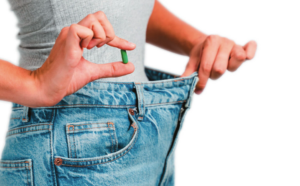If the people of this planet were given the opportunity with a wish to magically change something about them, most would probably choose to get the body of their dreams.
Every day, millions of people, rich and poor, young, middle-aged and old, regardless of nationality, origin or gender, battle with obesity.
The pharmaceutical companies are well aware of this, and they seem to have found the … magic way to gigantise their profits by offering the public the opportunity to lose weight simply by taking a pill. In a way, that is, in the magical way mentioned above.
In support of this, in recent days on the world’s largest financial market, the US stock exchange, analysts have been discussing the incredible profits that the shares of pharmaceutical companies are giving investors.
Not just any ones, but those that have a pill ready for testing or for marketing that promises ‘magical weight loss’ without effort or time.
Novo & Viking
The tremendous popularity and correspondingly tremendous profits brought by Novo Nordisk’s, originally intended for another purpose, Ozempic (the company is fighting to meet the demand for its two slimming pills, Ozempic and Wegovy, and its 2023 profits exceeded the GDP of the country in which it is based, Denmark) have created fierce competition, with companies from around the world putting all their weight behind launching, as quickly as possible, slimming pills with the fastest and greatest efficacy and the fewest possible side effects.
This has resulted in what analysts internationally call the ‘pharmaceutical slimming war’.
One hundred percent: that’s how much the stock of the pharmaceutical company Viking Therapeutics increased in price just before the debut of its new Glp-1-type slimming pill, tentatively named VK2735.
The pill, which has successfully passed the second phase of testing and testing by the United States’ competent pharmaceutical agency, the FDA, seems to have the fastest results and zero side effects compared to anything else on the market, and the American pharma is running clinical trials and development of the drug (it wants to make it available in pill form) so that at the end of this year, or the beginning of next, it will be available on the global market.
With this it aspires, if not to take the lead, at least to be the main competitor to the hitherto king of… of the Ozempic magic slimming product.
Viking says that based on the statistical data from its trials it was observed for all doses, starting in the first week and continuing throughout the 13-week study, that up to 88% of participants in these trials achieved 10% greater weight loss compared to just 4% of participants in the placebo arm.
No injections
Viking’s drug was “safe and well tolerated”. Most of the treatment-related adverse events were gastrointestinal, which is consistent with these types of drugs.
Viking said most of these effects were classified as mild or moderate, although one patient experienced a severe adverse event of dehydration that was classified as related to the study drug.
Of the 23 patients who discontinued treatment, 18 were in the treatment groups and five in the placebo arm. US-based Viking is not alone of course in developing such a drug.
Dozens of pharmaceutical companies have entered the slimming war and are rushing to exploit the hype that has been created and introduce their own drugs.
Thus, in addition to Viking Therapeutics, Regeneron, Amgen, Astrazeneca, Roche and Zealand Pharma have recently entered the fray, all of which are developing weight loss drugs in the hope of capturing some of the market share held by Novo Nordisk and Eli Lilly.
There is such excitement about the (pharmaceutical) fight against obesity that health statistics company STAT has created a specialised drug index that… burn fat. According to STAT’s Obesity Drug Tracker, well, last week there were 105 anti-obesity formulations in development by pharmaceutical companies, 1/5 of which, 23, are in pre-production development or already on the market.
The start has been made by Novo Nordisk which has launched the GLP-1 type drugs Ozempic and Wegovy for the treatment of type 2 diabetes, which use the active substance semaglutide to affect blood glucose levels and also brain chemistry by ‘turning off’ the appetite centre.
In practice, this means that users of the drug trick their brains with a sense of fullness (i.e. they think they are full by eating smaller quantities and with lower fat content) and therefore lose weight as they do not… “lie and eat”, according to Rena Vlahopoulou’s monumental line to her obese client, Susie.
Billions
The difference with the drugs under development is that most are not in injectable form, like Ozempic – Wegovy, but most likely come in pill form, offering slimming not only without sweat, but also without… pinching.
The way investors rush to position themselves in pharmaceuticals when they announce that they are preparing such a product (especially now that Novo Nordisk and Eli Lilly shares are worth their weight in gold) is monumental: Viking Therapeutics’ stock last December was trading at $10-11.
On 26 February, with rumours running rampant that it was up to ‘something’, it had reached $38.48, only to shoot up to $85 the next day and to $99 on 28 February, when it was officially confirmed that its slimming drug had passed the second phase of trials.
Similarly, Zealand Pharma’s shares on the Danish Stock Exchange rose more than 34% on Monday (26 February). Previously the company had announced strong results in a clinical trial for a liver disease drug that is also being tested for weight loss.
The company, based in Denmark, is developing the surbodidus-based drug in collaboration with German pharmaceutical giant Boehringer Ingelheim.
The two companies said on Monday that a second-phase trial found that 83 percent of patients who received the treatment saw significant improvements in a liver condition known as MASH. The “detail” is that this substance is in the third phase of clinical trials (and) for the treatment of obesity. Previous trials showed that it helped users lose almost 15% of their weight in 46 weeks.
Analysts focused on the drug’s potential effectiveness in obesity and gluttony research after the latest trial results showed something else very important: that even at the highest possible dosage, the drug remains safe for its users.
Until recently, therefore, many people believed that the ‘gold mine’ for pharmaceutical companies was the COVID-19 vaccines, or even the production of formulations that help in the fight against cancer. In practice, however, the fact that Novo Nordisk has a market capitalisation of DKK 2.87 trillion, or in the words of the International Monetary Fund, a valuation of USD 540 billion, that is to say 120 billion more than the country’s GDP, making it Europe’s largest listed company by market capitalisation, is enough to tell us a lot.
But it is not only in Europe. On the US stock exchange, the shares of Eli Lilly, whose obesity drug Zepbound was approved last November, are worth almost twice as much as those of Microsoft and more than a dozen times as much as those of other giants such as Pfizer.
Copernicus: The winter of 2023-2024 was the warmest ever in Greece – meteo maps
At $754 last Thursday were shares of the company that makes Zepbound, Pfizer’s $26.81, Astrazeneca’s $64.14, Sanofi’s $87.89 and Microsoft’s about $408.
The American pharmaceutical company named after the general-pharmacist of the American Civil War has a market capitalisation of $714.70 billion and is heading with the brakes broken to a trillion-dollar value!
This, not coincidentally. FactSet analysts “see” that the slimming drug market will have net sales of $15 billion per year by 2030, a forecast that is considered rather modest. This is because in our… infancy Eli Lilly’s Type 2 diabetes drug Mounjaro made sales of $1 billion (rather than $2 million to be precise) in just one quarter, the last quarter of 2023, demonstrating the explosive growth and gigantic potential this market has.
The forecast of the analysts at Barclays, who predict in a study that the (still forming) anti-obesity drug market will exceed $100 billion in value by 2030, is also considered moderate.
However, one only has to consider today that the total slimming market (including formulations, dubious ‘aids’, fitness equipment, etc.) exceeds $75 billion and is expected to grow to $377.3 billion by 2026, with demand for weight loss products and services growing by at least 8.2% per year. After all, who else will be tempted to be able to reduce their weight quickly with a pill and will prefer other ways?
The celebrities
For the pharmaceuticals it’s an El Dorado of profits.
For celebrities like billionaire Ilon Musk, Oprah Winfrey, Jessica Simpson, Mark Wahlberg, Ariana Huffington, Claire Kardashian and dozens more, it’s the magic wand to appear in public with the body they’ve been dreaming of.
For diabetics, this turned into a nightmare as some anti-diabetics went into short supply due to the shortage caused by overconsumption by too many people who had learned the secret to slimming down.
For the world of medicine, however, it seems to be gold in her hands.
The drugs that the general public hear about as helping, for example, a patient to lose 19% of their body weight in a few weeks, actually cure a number of other diseases.
A typical example is the MASH condition which resembles the hepatitis caused by alcoholism, but is an inflammation of the liver caused by excess fat cells in it.
Chronic inflammation that causes progressive liver damage affects about 3% of the US population.
Ozempic has been presented as an anti-diabetes drug (and it is), while a number of slimming drugs being promoted have the side benefits of regulating sugar levels, protecting the liver from fat cells, etc.
Ask me anything
Explore related questions





